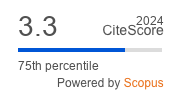Article | Open Access
Space and Interaction in Civil Society Organizations: An Exploratory Study in a US City
| Views: | 2697 | | | Downloads: | 1537 |
Abstract: Civil society organizations (CSOs) are sites for creating and strengthening social ties among participants. Ties are developed when participants in CSO convenings (meetings, events, activities) interact, but convenings vary in the amount of interaction they generate. Theory and research suggest that the physical spaces where convenings occur may impact participant interaction. However, previous methods lack sufficient scale to formally test related hypotheses. We introduce a method for collecting data at scale to examine how CSO convening spaces influence social interaction. The method—systematic social observation (SSO)—assembles comparable, quantitative data from many CSO convenings. As part of an exploratory study, we collected data from 99 CSO convenings from three organizations in Indianapolis, Indiana. For illustrative purposes, building on theories of spatial propinquity and configuration, we highlight two dimensions of spatial variation in CSO convenings—footprint and permeability—and examine how they relate to three indicators of participant interaction. Our findings suggest that controlling for the number of participants and other convening characteristics, medium‐sized spaces foster more interaction than small or large ones. More broadly, this study demonstrates the viability of the SSO method for collecting data at scale and provides a model for future work on space, interaction, and networks.
Keywords: civil society organizations; interaction; social network ties; space; systematic social observation
Supplementary Files:
Published:
Issue:
Vol 10, No 3 (2022): On the Role of Space, Place, and Social Networks in Social Participation
Online discussion: Watch the conversation about this article on Let's Talk About
© Matthew Baggetta, Brad R. Fulton, Zoe Caplan. This is an open access article distributed under the terms of the Creative Commons Attribution 4.0 license (http://creativecommons.org/licenses/by/4.0), which permits any use, distribution, and reproduction of the work without further permission provided the original author(s) and source are credited.


